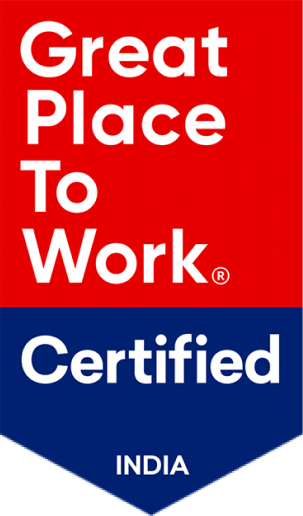Launched among thousands of various digital businesses who look forward to thriving today, launching an e-commerce website is one of the most important actions a business should take. But having a website does not merely suffice. Your ecommerce store should engage customers, be user-friendly, and be optimized for conversion. This comprehensive guide shows you 15 essential features you should integrate when you create your ecommerce website, which features detailed explanations, use cases, and examples to help you build a high-performing online store.
15 Must-Have Features When You Create a Ecommerce Website:
1. Intuitive Navigation: Guide Customers Effortlessly
Effortless navigation is crucial for delivering a great user experience. Customers must be able to quickly and easily find the things that interest them. Implement clear product categories, a robust search bar with autocomplete and predictive text, and have filtering/sorting options, say price, brand, size, color etc. The mega menu often proves to be a goldmine for sites sporting large, unorganized catalogs. It is one of the most important facets of successful ecommerce and web design.
Example:
A big online electronics retailer categorizes products by type (TVs, laptops, cameras, etc.), brand, and price range using a mega menu. The search bar auto-completes with relevant products as the user types, and filtering options allow users to narrow down their search by screen size, processor speed, and other specifications.
2. High-Quality Product Visuals: Showcasing Your Products in the Best Light
Product views should be the best way to capture the customers’ attention by making them know about the details of the products. Use high-quality images and videos to capture product views from various angles. Include zoom facility for customers to examine the minute details of products. For products such as furniture, clothing, and electronics, include 360-degree views.
Example:
The expensive clothing boutique employed professional models and used close-up shots of fabrics, detailed video clips of how the clothes move and drape.
3. Captivating Product Descriptions: Providing Necessary Information and Storytelling
Product descriptions have to be greater than a series of features. They need to give in-depth information of materials, measurements, specifications, care instructions and benefits, in addition to relating a story that speaks to value for the customer. Language needs to persuade and emphasize all key selling points.
Example:
A handcrafted jewelry store elaborates on detailed descriptions of what materials were used, the artisan’s inspiration for creating the pieces, and qualities that make a piece unique to another.
4. Customer Reviews and Ratings: Building Trust and Social Proof
Customer reviews and ratings are essential for building trust and social proof. Encourage customers to leave feedback and make it easy for them to do so. Moderate reviews to ensure authenticity and address any negative feedback promptly.
For instance, an e-retailer for beauty products always has customer reviews and ratings that appear on the product page; the reviews range from positive to negative but eliminate spam and any form of unsolicited content.
5. Payment Gateway Integration Safeguards Transaction
Offer multiple safe and secure payment methods, such as major credit cards, debit cards, digital wallets (Apple Pay, Google Pay, PayPal), and even buy-now-pay-later.
Include security badges (SSL certificates, PCI compliance) to let customers know their payment details are secure and safe.
Example:
An online bookstore integrates Stripe, PayPal, and Afterpay, giving the customer various payment options and trust by displaying security seals from major authorities.
6. Simplified Shopping Cart and checkout process: Less friction
Make checkouts as easy and intuitive as possible. Make the steps of checkout process as few as possible, offer guest checkout options and clear progress indicators. Put a prominent “Checkout Now” button and make sure your cart is accessible from anywhere in the website.
Example:
An online grocery store enables a customer to add items to his or her cart with a single click and has a one-page checkout process with clear instructions and secure form fields.
7. Clear Shipping Options and Charges: Setting Expectations
Clearly display shipping options and costs upfront, preferably on the product page or in the shopping cart. To ensure variety, provide different shipping methods: standard, expedited, overnight, among others, to accommodate individual customer needs and budgets. Estimate the delivery date and offer free shipping above a certain order value. Understanding ecommerce development cost in planning your shipping strategy is important.
Example:
A furniture retailer offers free standard shipping on orders over $500 and provides expedited shipping options for customers who need their items quickly. They also provide a shipping calculator in the cart to allow customers to estimate shipping costs based on their location.
8. Real-Time Order Tracking: Keeping Customers in the Loop
Allow customers to track their order in real time. Provide customers with a tracking number and with a link on the shipping carrier’s website. Customers can be able to view the shipment and track the order. Send automatic email or SMS updates at different stages of shipping.
Example:
A subscription box service would send an email notification when a shipment is dispatched, including the tracking number along with a link to the website of the carrier.
9. Clear and Easy-to-Understand Return and Refund Policy: Building Customer Confidence
Clearly post your return and refund policy on your website so it is easy to find and easily understood. A generous and clearly understandable policy goes a long way in increasing confidence in the product and in turning customers into purchasers. Clearly guide customers on how to start returning and provide for multiple return options, such as return shipping labels or in-store returns.
Example:
An online shoe store offers a 30-day return policy with free return shipping, providing a pre-paid return label in the original packaging.
10. Mobile Responsiveness: Reaching Customers on Every Device
Ensure that your website is completely responsive and optimized for mobile. Mobile commerce is exploding, and seamless mobile experiences are essential for broadening audiences and maximizing conversions. Your website needs to respond easily to the varied screen sizes and orientations for providing a seamless experience across all devices. This is also a significant requirement in ecommerce mobile app development and mobile app development for ecommerce.
Example:
An e-commerce fashion business makes sure the website works smoothly on mobiles and tablets and provides a touchscreen-friendly interface and optimized images and easy checkout. It has nothing to do with search engines
11. SEO: Bringing in Organic Traffic into Your Store
Optimize your website for search engines to attract organic traffic. Conduct keyword research to identify relevant keywords, optimize product descriptions and titles, build high-quality backlinks, and ensure your website is technically sound. This is a key component of effective ecommerce web design services and ecommerce web development services.
Example:
The online bookstore optimized product pages by adding relevant keywords like “best selling fiction books,” “new release thrillers,” and “biographies of historical figures.” It also posts blogs about books and authors, targeting organic traffic.
12. Social Media Integration: Reaching out to Wider Audiences and Interacting with Customers
Integrate social media platforms on your website to market your products, interact with customers, and build a community around your brand. Include social sharing buttons on product pages, display social media feeds on your website, and run social media marketing campaigns.
Example:
A cosmetics brand enables followers to share their favorite products on social media in one click and runs contests and giveaways on Instagram to interact with their followers.
13. Live Chat Support – Instant Response and Enhanced Customer Satisfaction
Live chat support should be provided to address the customer’s queries, assist in real time, and make a purchase ready step-by-step for the customer. Live chat can significantly boost the conversion rates and customer satisfaction levels.
Example:
An online furniture store provides live chat support to help customers choose the right sofa for their living room, answer questions about fabric options, and provide information about delivery times.
14. Email Marketing Integration: Nurturing Customer Relationships and Driving Repeat Purchases
Integrate email marketing tools to capture customer email addresses and send targeted promotions, newsletters, and abandoned cart reminders. Email marketing is also a great tool that encourages fostering customer relationships and resulting in repeat purchases.
Example:
Online clothing store gives discount coupons to customers to encourage their email list, thus sending them personalized email recommendations based on the clothes they browse through.
15. Analytics and Reporting: Tracking Performance and Making Data-Driven Decisions
Use analytics tools, such as Google Analytics, to track your website traffic, sales, and customer behavior among other key metrics. Use these data to inform decisions about design, marketing strategy, and products. An ecommerce development agency can help you set up and interpret your analytics.
An electronic store selling electronics online uses Google Analytics to show which products people like most and which pages attract the highest rate of bounces. It identifies which marketing campaign is bringing traffic to the most pages. Through this data, it optimizes the design for its website and improves its strategies in marketing campaigns.
Conclusion:
By implementing these 15 most critical components to your e-commerce site, you can design a shop that looks amazing but will also be nicely functional, user-friendly, and conversion-optimized. Don’t forget to associate with an ecommerce web development firm or ecommerce development company for developing the best online store that meets your business requirements.
These features are necessary to build a flourishing and profitable online business irrespective of whether you want customized ecommerce development, dedicated development in specific platforms like Magento ecommerce development company, or ecommerce site development cost. Indeed, the factor that is essential for achieving online success is the investment in professional ecommerce web design and development.
If you are looking to get started with integrating these 15 features when you create your ecommerce website, we are here to help you with it. Let’s discuss.

Start a Project with Ajackus












